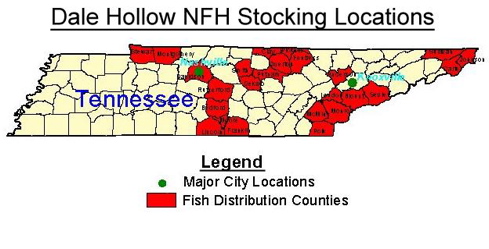Dale Hollow fish hatchery gets $1.5M grant for system to treat fish waste; product could be used as soil supplement
 CELINA-In an effort to clean up Obey River and help local farmers, Congressman Bart Gordon announced today that the U.S. Department of Interior awarded $1.5 million to Dale Hollow National Fish Hatchery to build a treatment system for fish waste products.
CELINA-In an effort to clean up Obey River and help local farmers, Congressman Bart Gordon announced today that the U.S. Department of Interior awarded $1.5 million to Dale Hollow National Fish Hatchery to build a treatment system for fish waste products.
The fish waste will be made available to farmers, which can be used as topsoil treatment for agricultural crops.
“Currently, the fish hatchery just releases the waste into the Obey River,” explained Congressman Gordon. “The treatment system has the potential to really help farmers, whose crops have been significantly affected by droughts over the last few years. Studies have shown fish waste as topsoil can increase the value of a farmer’s crop by as much as 11-16%.”
The treatment system will bring the hatchery into compliance with the Tennessee Clean Water Act. The hatchery produces 1.5 million or 310,000 pounds of rainbow, brown, lake and brook trout a year. The trout, which require around 400,000 pounds of feed, produce thousands of pounds of fish waste that accumulates in the hatchery’s tanks and raceways. The treatment system will allow the hatchery to separate the waste products from the water released into the river when the tanks and raceways are cleaned.
“The Tennessee Department of Environment and Conservation and the U.S. Fish and Wildlife Service have been working together, monitoring the discharge,” explained Andrew Currie, the Dale Hollow National Fish Hatchery (NFH) manager. “The U.S. Fish and Wildlife Service plans to construct a microscreen filtration system that uses drum filters to separate fish waste from cleaning water. The treatment system plan has been endorsed by the Tennessee Department of Environment and Conservation.”
Dale Hollow NFH was established in 1965 to mitigate for fishery resources lost due to the construction of federal water development projects throughout the Southeast. The hatchery stocks trout in waters impacted by federal dams in counties throughout Tennessee, as well as Alabama. With more than 50,000 visitors annually, the hatchery generates a substantial amount of economic activity for local and regional economies.

